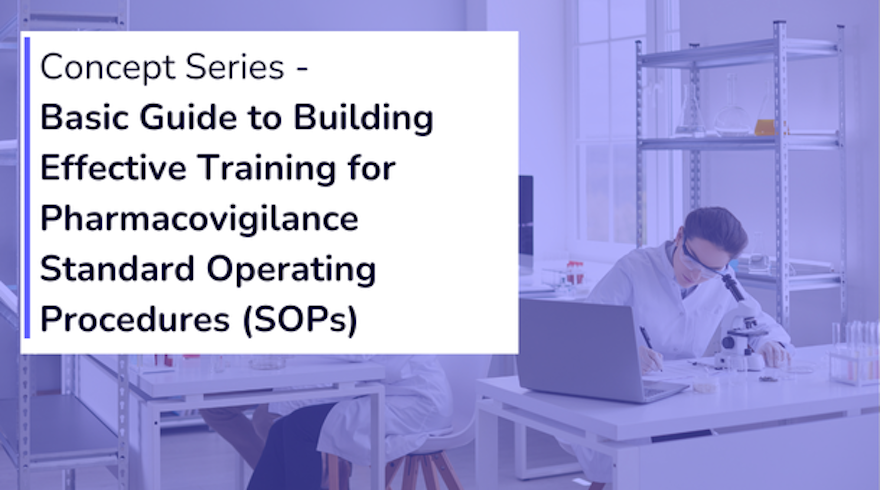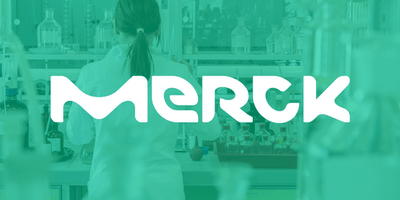Why This Matters Now
Pharmacovigilance (PV) isn’t just another regulated function — it’s the nervous system of every pharmaceutical company. Mistakes in adverse event reporting, delayed case submissions, or poor signal detection can result in patient harm, product recalls, and multi-million-dollar penalties. The stakes are real.
Yet many PV departments still rely on read-and-understand SOPs that fail to ensure true comprehension or skill transfer. Employees read, sign, and move on — but they don’t always remember what matters in the moment of action.
The future of training in regulated industries is shifting fast. Compliance isn’t enough. Companies must build training ecosystems that are instant, centralized, and intelligent — enabling employees to access what they need, when they need it, in the flow of work. That’s where modern learning platforms like Speach come in: transforming complex documentation into bite-sized, visual, and interactive training that sticks.
Step 1 — Define the Foundation: Purpose, Scope, and Roles
Every effective SOP-based training starts with a crystal-clear understanding of the underlying document. Before you even think about filming or scripting, break the SOP down into its essentials:
- Purpose: Why does this SOP exist? For example: “To standardize the intake, evaluation, and reporting of individual case safety reports (ICSRs) in accordance with ICH E2B(R3) requirements.”
- Scope: Which products, study phases, or geographies does it cover? Does it apply only to marketed products or also to clinical trials?
- Definitions: Terms like AE (Adverse Event), AR (Adverse Reaction), and SUSAR (Suspected Unexpected Serious Adverse Reaction) must be defined early and consistently.
- Responsibilities: Who does what — the PV officer, medical reviewer, quality auditor, or affiliate partner?
- Regulatory References: Point to ICH, EMA, and FDA sources. Clarity here ensures compliance alignment downstream.
Pro tip: For every SOP you plan to train, create a “Purpose-Scope-Role” matrix. This ensures your training focuses only on what’s truly actionable for each audience segment — not the entire 30-page document.
Step 2 — Visualize the Workflow Before You Teach It
Pharmacovigilance processes are inherently sequential. To make them trainable, you must first make them visible.
Take the ICSR process as an example. A typical flow might include:
- Case intake and triage
- Data entry and duplicate check
- Medical review and seriousness assessment
- Regulatory submission (e.g., 15-day or 90-day timelines)
- Follow-up and reconciliation
- Archival and audit readiness
Instead of explaining this in text, use Speach to create a visual flow video. Each step appears on screen with icons, arrows, and short captions. Add a voice-over: “After data entry, the case must be quality-checked and submitted within 15 calendar days for expedited reporting.”
Training designers can use Speach templates to convert these flows into short video tutorials — 2 to 3 minutes each — that employees can rewatch whenever needed. Visual learning accelerates comprehension by up to 60% compared to static SOPs (source: JAF Consulting, 2023).
Step 3 — Anchor Your Training to Regulatory Standards
Pharmacovigilance operates under strict global frameworks: ICH, GVP, EMA, and FDA guidance. Training must reflect this reality. Always map each SOP or training module to its corresponding regulation. Here’s how:
- ICH E2E (Pharmacovigilance Planning): Explain how the PV plan drives the entire safety monitoring strategy.
- ICH E2B(R3): Link electronic data elements directly to the reporting workflow in your videos. Show how incorrect coding of seriousness or expectedness impacts compliance.
- Good Pharmacovigilance Practices (GVP): Connect each module to the specific GVP section — for instance, “Module VI: Management and Reporting of Adverse Reactions.”
- Company-specific requirements: Align with internal audit expectations and document retention policies.
Example: If your SOP covers “signal detection,” include an on-screen callout in your Speach video: “This process aligns with EMA GVP Module IX on Signal Management.” It not only reinforces regulatory awareness but also makes auditors smile — they can see your compliance evidence instantly.
Step 4 — Turn Complexity Into Microlearning Moments
One of the biggest reasons SOP training fails is cognitive overload. A 40-page document cannot become a 40-minute course. Break it down into manageable, visual chunks. Each module should cover one specific objective — no more than a single decision or process step.
Example: Take “Case Intake and Initial Triage.” Instead of dumping the entire process, build a Speach containing:
- A short 90-second animation explaining what counts as an adverse event.
- A visual checklist: reporter name, contact info, suspect product, event description, and outcome.
- A 3-question quiz reinforcing critical points (“What happens if the reporter is unknown?”).
- A 30-second real-world scenario video (shot on a smartphone) showing a PV associate receiving a spontaneous report by phone.
This approach combines visual + auditory + contextual learning. Employees understand faster and retain longer. Research shows microlearning improves retention by up to 80% compared to traditional eLearning (source: Journal of Applied Psychology, 2020).
Step 5 — Link Training to Performance Metrics
Training without metrics is noise. Define measurable outcomes for every SOP module. For example:
- “All PV specialists must complete the updated ICSR submission module within 7 days of SOP revision.”
- “Duplicate-case error rate must drop by 15% within one quarter of training deployment.”
- “Audit observations related to SOP deviations must reduce by 25% year-over-year.”
Speach’s analytics allow you to track who watched each Speach, how long, and whether they passed embedded assessments. You can export this data to your LMS or quality dashboard, providing documented evidence during audits.
Action Tip: Link your PV quality KPIs (e.g., on-time reporting, case quality score) directly to training completion data. Correlation equals proof of impact — and proof earns budget.
Step 6 — Establish a Continuous Improvement Loop
Regulations evolve. So must your SOPs — and therefore your training. Build a formalized update cycle:
- Trigger detection: Regulatory update (e.g., EMA issues new GVP revision).
- Impact assessment: QA reviews which SOPs are affected.
- Content refresh: L&D or training designer updates corresponding Speach videos.
- Version control: Archive old training and assign new modules automatically.
- Communication: Notify all impacted employees via email or intranet link.
Inside Speach, versioning happens automatically — so when an SOP changes, every linked video and quiz can be updated and redistributed without manual tracking. That’s audit-ready efficiency in action.
Step 7 — Tailor Training for Every Audience
Not everyone needs the same level of depth. Segment your audience and adapt tone, examples, and interactivity accordingly.
- For PV specialists: Provide deep-dive case studies — e.g., how mis-coding causality once led to a regulatory finding.
- For Clinical teams: Focus on identifying and escalating adverse events quickly from trials.
- For QA/Compliance: Showcase how training supports audit traceability and CAPA prevention.
- For Vendors or CROs: Use simplified, process-focused Speaches that explain your company’s expectations and escalation paths.
- For Field or Call Center Staff: Create ultra-short explainer videos on “how to report a product complaint.”
Speach allows you to deliver customized playlists by role or site, ensuring every team member receives the content that’s relevant to them — no more one-size-fits-none training.
Step 8 — Embed Human Factors and Culture
Pharmacovigilance is about people as much as process. Even the most beautifully written SOPs fail if employees don’t understand why the rules exist. Use training to build a culture of responsibility and empathy.
Example module: Start a Speach video with a real patient story — “An adverse event that wasn’t reported on time.” Then show how accurate reporting prevented recurrence. Emotional storytelling enhances moral ownership far beyond compliance checklists.
Encourage SMEs to record short “lessons learned” Speaches after audits or CAPAs. A PV Manager explaining, in their own words, what went wrong and how to prevent it carries more weight than a PDF reminder.
Pro tip: Add a “Feedback” section in each Speach. Ask employees: “Which part of this process is hardest to apply?” Their insights fuel your next SOP update.
Step 9 — Strengthen Technical Infrastructure & Integration
For regulated industries, training systems must be auditable, secure, and seamlessly integrated with quality management systems (QMS) and learning management systems (LMS).
- Tracking: Use Speach analytics or xAPI integration to feed completion data into your LMS.
- Mobile access: Employees on manufacturing floors or call centers can access micro-videos on tablets — no excuses for outdated knowledge.
- Version control: Each Speach includes a version tag aligned with the SOP effective date.
- Audit readiness: During inspections, show the audit trail: “Employee X completed version 3.2 of SOP PV-101 training on Jan 15 2025.”
- Security: Ensure only validated users can access confidential PV examples or patient data simulations.
With Speach, every video, quiz, and update is traceable. You don’t just train people — you build a living compliance ecosystem.
Step 10 — How Speach Transforms Pharmacovigilance Training
Traditional training methods can’t keep pace with regulatory change or workforce turnover. Speach solves this by transforming lengthy SOPs and procedures into dynamic, AI-assisted microlearning that employees can access instantly.
- Reduce training time: Turn a 60-minute read-and-sign SOP into a 5-minute video with embedded comprehension checks.
- Minimize errors: Visual demonstrations of data entry or case triage eliminate misinterpretations.
- Standardize globally: Deploy the same approved training across all affiliates in multiple languages.
- Empower employees: Quick access to “how-to” micro-videos builds confidence and reduces dependency on supervisors.
- Ensure compliance: Versioning, completion tracking, and audit trails make regulators happy and inspections faster.
Example: A global pharma client used Speach to retrain 3,000 PV staff across 14 countries on a revised ICSR submission SOP. The result? Training completion in under two weeks, a 40% drop in case entry errors, and zero audit findings during follow-up inspection.
Conclusion — From Compliance to Performance
The pharmacovigilance world is evolving fast — AI signal detection, real-time data exchange, and complex global partnerships demand a workforce that learns continuously. The companies that thrive will be those that make knowledge instant, centralized, and intelligent.
Building effective training for PV SOPs means more than converting documents into eLearning. It’s about translating rules into behavior, embedding accountability into culture, and turning compliance into a competitive advantage.
With Speach, you can bring this vision to life — transforming every SOP into an engaging, trackable, multilingual learning experience that ensures your teams not only know what to do but do it right, every time.





